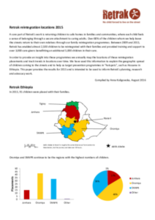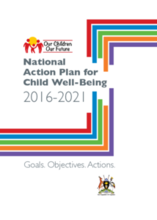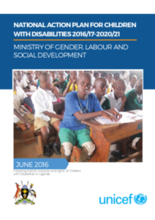This country page features an interactive, icon-based data dashboard providing a national-level overview of the status of children’s care and care reform efforts (a “Country Care Snapshot”), along with a list of resources and organizations in the country.
demographic_data
childrens_living_arrangement
children_living_without_bio
social_work_force
key_stakeholders
Key Stakeholders
Add New DataOther Relevant Reforms
Add New Datadrivers_of_institutionalisation
Drivers of Institutionaliziation
Add New Datakey_research_and_information
Key Data Sources
Add New DataThe Children Act (Uganda)
Country Care Review: Uganda
Prevalence and number of children living in institutional care: global, regional, and country estimates
The National Integrated Early Childhood Development Policy Action Plan (2016-2021) of Uganda
Catholic Care for Children in Uganda: A Family for Every Child - Findings from a Midterm Evaluation
Acknowledgements
Data for this country care snapshot was contributed by a consultant with the Data for Impact (D4I) Project at Palladium Group LLC.
Displaying 231 - 240 of 393
This is a webinar that occurred on August 19 through the RISE Learning Network.
Each year Retrak maps the locations of family reintegration placements and tracks trends in locations over time. They have used this information to help them understand the geographic spread of children coming to the streets and to target prevention programmes on ‘’hotspots’’- places from which many children migrate to the streets.
This study examines the experiences of young female survivors of sexual violence in northern Uganda in order to explore the variety of roles (both positive and negative) that informal support networks played in contributing to survivors’ healing, recovery, and reintegration.
The refresher course will provide the knowledge base and theoretical framework for understanding and developing best practices in alternative care.
The 4Children Initiative (4C) of Catholic Relief Services (CRS) is recruiting a ‘Keeping Children in Healthy and Protective Families’ (KCHPF) Uganda Project Director who will be a member of the CRS Uganda team in Kampala.
In this National Action Plan for Child Well-Being, Uganda spells out goals, plans, and actions it needs to take to improve child well-being in Uganda. The document points out that 62 percent of persons living in poverty are children. It notes that 33 percent of children under 5 are stunted, and it further states that only 37 percent of children make it to secondary education.
The Accelerating Strategies for Practical Innovation and Research in Economic Strengthening project (ASPIRES) is a USAID- and PEPFAR-funded cooperative agreement implemented by FHI 360 that supports evidence-based, gender-sensitive programming to
Uganda’s President Museveni has assented to the Children's (Amendment) Bill 2015, a bill that “seeks to strengthen the protection of children's rights and restrict legal guardianship of children to Ugandan citizens,” according to this article from All Africa.
This report captures what has been accomplished in social service workforce strengthening in eight countries in Sub-Saharan Africa and highlights areas for future intervention. Progress made to strengthen the social service workforce within these countries is useful when reflecting on global trends and ways forward.
The aim of the National Action Plan is to encourage government and other children’s rights actors to adequately plan for and respond to the holistic needs and aspirations of CWDs in Uganda.





